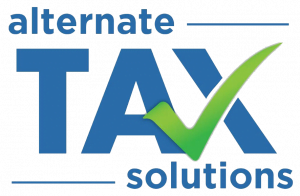179D Tax Deductions for Energy Efficient Buildings
What is §179D?
Section 179D of the Internal Revenue Code allows building and project owners a deduction for
- Building envelop system investments
- Lighting system investments
- HVAC/Hot water system investments
Each system must show that it reduces total energy costs by 50% compared a baseline building model provided in ASHRAE Standard 90.1-2007. Section 179D acts as incentive for building owners and designers to reduce the carbon footprint of each building.
This deduction is calculated based square footage of the building. It is available to both building owners and architect or engineering firms that design systems for publicly-owned buildings.
What is the 179D tax benefit?
Through 2022, qualifying projects can receive up to $1.88 per square foot. Investments in new lighting system may be eligible for a partial deduction of up to $0.63 per square foot under the Interim Lighting Rule.
Available 179D Benefits (through 2022)
| Qualification | Building System | Savings Required compared to ASHRAE 90.1-2007 model bldg.. | Total Deduction |
|---|---|---|---|
| Fully qualified | HVAC, Envelop, Lighting | 50% | $1.88 |
| Partially Qualified | Envelope | 10% | $0.63 |
| HVAC & Hot Water | 15% | $0.63 | |
| Lighting | 25% | $0.63 | |
| Interim Lighting Rule | Lighting Only | Must show 25%-40% lower power density | $0.63 |
How can I obtain the 179D benefit?
In order to claim this tax deduction, building owners or the project designer must prove that the required energy savings have been met. This must be done through construction of an energy savings model that compares the newly installed systems to the systems of building components specified in the ASHRAE 90.1-2007 baseline model.
All projects and models must be certified by a third-party construction professional (separate from the designer claiming the deduction). Physical inspection of the systems must also be completed.
How do I claim the benefit on tax returns?
Taxpayers claim the 179D benefit as a deduction on their tax returns in the same year that the building is placed in service. However, designers and building owners can obtain the benefit for past projects as well:
Building Owners- Can claim a deduction for any project placed in service after 2006 by filing a 3115 change of accounting method (similar to a cost segregation analysis).
Project Designers- Can claim deductions for past project by amending tax returns up to three years prior to the current year.
Tax Benefit to Quadruple in 2023
The Inflation Reduction Act raises the potential tax benefit for energy efficient system by allowing a §179D of up to $5.00 per square foot. This provides a huge savings opportunity for even the smallest of projects.
In order to obtain the full deduction of $5.00 per square foot owners and designers must show that that the project complies with two additional requirements:
- Project must employ contractors or subcontractors that pay laborers at a prevailing wage rate
- A certain % of tradesmen working on the project must be registered in an industry apprenticeship program
Taxpayers will need to think through how they can obtain the documentation needed to comply with these requirements. ATS can provide guidance on how to meet IRS requirements and obtain the maximum benefit. This new criteria will apply to any project beginning construction after January 30, 2023
How can an architect or designer claim the 179D benefit?
Did you know that the primary designer of these systems for any publicly owned building has the ability to claim the 179D deduction? A primary designer can be an architect, engineer, or other design consultant primarily responsible for the creation of technical specifications for each system.
In order to obtain the benefit as a designer, firms must obtain an allocation document from a government representative that has authority over the project. Many government entities have made this a straight forward process.
Why do I need a 179D study to claim this benefit?
The IRS can challenge any tax position. Taxpayers claiming this deduction must comply with the IRS audit techniques guide requirements. If you believe that your project qualifies for the 179D deduction, you will need:
- An energy model showing that the subject building meets the energy reduction requirements of ASHRAE 90.1-2007
- A physical site visit to verify installation
- Review of the energy model by a 3rd party engineer registered in the state that the building is located
- Documentation needed to prove prevailing wage and apprenticeship requirements (for 2023 projects)
ATS will work with you to provide all the documentation needed to claim and defend this benefit.
For more information please click here.

